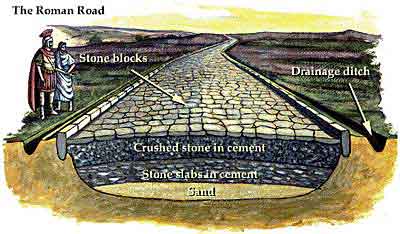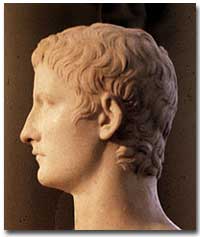What Continuity is There Between the Pax Romana and the Hellenistic Age

6c. The Pax Romana
The term "Pax Romana," which literally means "Roman peace," refers to the time period from 27 B.C.E. to 180 C.E. in the Roman Empire.
This 200-year period saw unprecedented peace and economic prosperity throughout the Empire, which spanned from England in the north to Morocco in the south and Iraq in the east. During the Pax Romana, the Roman Empire reached its peak in terms of land area, and its population swelled to an estimated 70 million people.

This map depicts the Roman Empire in 117 C.E., at the height of the Pax Romana.
Nevertheless, Rome's citizens were relatively secure, and the government generally maintained law, order, and stability. The Pax Romana began when Octavian became the leader of the Roman Empire.
Civil War and More
After the murder of Julius Caesar, a period of civil war erupted in Rome. Out of this turmoil emerged the Second Triumvirate, consisting of Lepidus, Antony, and Octavian, who was Julius Caesar's nephew. This new triumvirate ruled Rome for a decade, but as happened with the First Triumverate, differences among the leaders eventually emerged.

The romance between Antony and Cleopatra has inspired the imaginations of artists for a millennium.
Octavian defeated Lepidus in battle, and then turned his armies against the more powerful Mark Antony. Antony had fallen in love with and married the spellbinding queen of Egypt, Cleopatra. At the Battle of Actium off the coast of Greece in 31 B.C.E., Octavian's navy defeated the navy of Antony and Cleopatra, who later both committed suicide.
Octavian returned to Rome triumphant and gave himself the title of princeps or "first citizen." Octavian was careful not to upset the Senate by declaring himself dictator as his uncle Julius Caesar had done. Even though Octavian ruled as a de facto dictator, he maintained the Senate and other institutions of the republican government.
In 27 B.C.E., the Senate bestowed the holy title of Augustus upon Octavian. Augustus, as he became known, ruled for 41 years, and the policies he enacted lay the groundwork for the peace and stability of the Pax Romana.
All Roads Lead to Rome
The 200 years of the Pax Romana saw many advances and accomplishments, particularly in engineering and the arts. To help maintain their sprawling empire, the Romans built an extensive system of roads. These durable road facilitated the movement of troops and communication. The Romans built aqueducts to carry water overland to cities and farms.

The Roman army built the roads that connected the vast Roman empire. By layering sand, cement, and stone, they created durable roads that lasted long after the fall of Rome.
Many of the advances in architecture and building relied upon the Romans' discovery of concrete. Concrete made possible the creation of huge rounded arches and domes.
One of the most famous structures built during the Pax Romana, the Pantheon in Rome, has one of the largest freestanding domes in the world to this day.
During the Pax Romana, many of Rome's finest writers (such as Horace, Virgil, Ovid, and Livy) produced literary and poetic masterpieces. Rome became the economic, political, and cultural capital of the entire Western world.

Caligula's bizarre and sometimes sadistic behavior eventually led to his assassination in 41 C.E.

Bald Is Not Beautiful
After Augustus's death in 14 C.E., other Roman emperors ruled with varying effectiveness. One emperor, Caligula, was mentally ill and regularly abused his power. He was so sensitive about his baldness that he prohibited anyone from looking down upon his head and shaved some people who had a full heads of hair.
Caligula was a vicious sadist who took great pleasure in watching people being put to death. In fact, he often requested that killings be prolonged as much as possible. Caligula also had a tremendous sexual appetite and committed incest with his sisters.

"Consider when thou art much vexed or grieved, that man's life is only a moment, and after a short time we are all laid out dead." -Marcus Aurelius
He even invited his favorite horse to eat at formal state dinners.
Eventually, his bizarre and tyrannical behavior turned the Romans against him, and in 41 C.E., Caligula was assassinated by members of his own Praetorian guard.
Not all emperors were unfit to rule. In fact, a series of leaders known as the Five Good Emperors ruled in succession and presided over a prolonged period of peace and prosperity.
The last of these emperors, Marcus Aurelius, was the final emperor of the Pax Romana. His reign was followed by the disastrous reign of his brutal son Commodus (160-192 C.E.). By this time, the Empire was struggling to hold off attacking tribes on the frontiers.
Source: https://www.ushistory.org/civ/6c.asp
0 Response to "What Continuity is There Between the Pax Romana and the Hellenistic Age"
Mag-post ng isang Komento